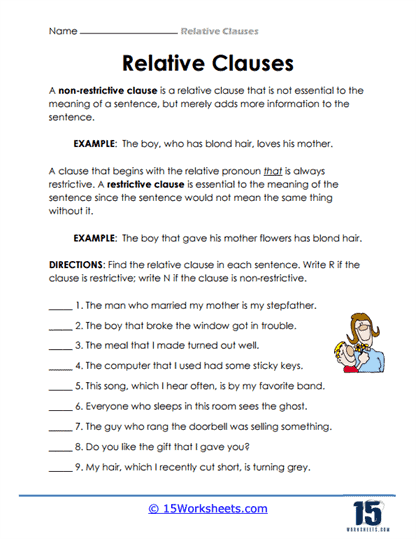Restrictive Or Not?

Worksheet Description
This Relative Clauses worksheet is focused on teaching the difference between restrictive and non-restrictive relative clauses. It explains that a non-restrictive clause adds extra information to the sentence but is not essential to the core meaning, while a restrictive clause is crucial for the sentence’s meaning. Through examples provided, students can see how the meaning changes with the use of different types of clauses. The worksheet then challenges students to identify the type of relative clause in given sentences and to mark them as restrictive (R) or non-restrictive (N).
The worksheet is aiming to educate students on how to correctly identify and use relative clauses, which are key elements in sentence construction for providing additional information about a noun. It teaches the significance of relative clauses in terms of sentence meaning and structure. By determining whether the clause is restrictive or non-restrictive, students learn how the inclusion or exclusion of a clause can alter the message of a sentence. This skill is important for effective communication, as it affects how information is presented and understood in writing.
